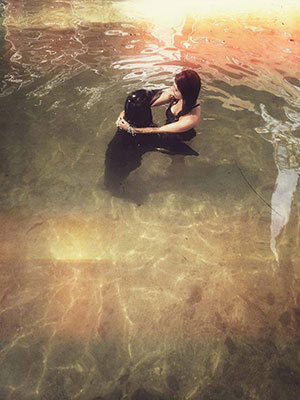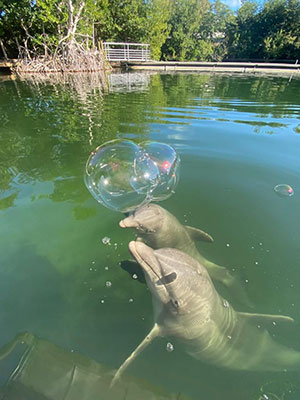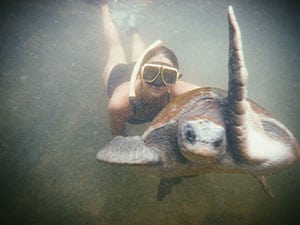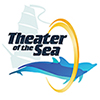Animal Care Principles
Each animal is provided with:

- care and maintenance standards which meet or exceed government regulations.
- daily visual examinations, regular veterinary physicals, and routine diagnostics.
- an individualized diet and supplements.
- diet, behavior, and medical records.
- a primary caretaker who is familiar with the individual, his diet, behavior, and appearance.
Animal Training PhilosophyTheater of the Sea’s animal caretakers:- seek to understand animal behavior, both innate and acquired (learned).
- view training as a two-way communication, not as a display of dominance.
- recognize and respect each animal as an individual.
- understand that we are placing the value on their behavior and do not consider or refer to behavior as good or bad, but as desired or undesired.
- offer each animal his full diet daily; food deprivation is not a training option.
- provide an enriching environment for each species housed at the facility.
Animal EnrichmentThe purpose of enrichment is to increase physical activity, provide mental stimulation, encourage species appropriate behavior, and promote positive social interaction. How do we enrich animals at Theater of the Sea?

- Habitat
Our large outdoor lagoons are surrounded by lush tropical foliage native to the Florida Keys. Our animals are immersed in nature and enjoy an incredible amount of space to explore. - Enrichment Devices
From back rubs with bath mitts to PVC pipes stuffed with lettuce, our animals are given a variety of toys and props to play with. Favorites include buoys, hula hoops, target poles, feeder pipes and even mirrors. - Training and Play
The most important form of enrichment we can provide is training! Shows, programs, boat rides, and training/play sessions are all great ways to open a line of communication into the animal world,challenge the animals to show off their natural capabilities, and promote positive animal and human interaction
Animal Training Technique
- Training at Theater of the Sea utilizes operant conditioning techniques based on positive reinforcement. Basically, desired behavior is reinforced and undesired behavior is ignored.
- New behaviors can be taught in a number of ways including targeting, where the animal remains in contact with a target object and is led through the movements of a behavior.
- Behaviors are often shaped in stages called approximations, where a series of gradual steps build up to a final behavior.
- The length or time it takes to train a behavior depends on the animal, the trainer, and the behavior.
- Each trained behavior has a unique signal, such as a hand or verbal cue.
- Another signal, such as a whistle or the word good, is called a bridge and indicates that a behavior has been performed correctly and will be reinforced.
- A reinforcer is anything that increases the likelihood of the behavior, such as food or attention.
- With training, behaviors the animals do naturally can be shaped into those performed for shows, programs, and medical procedures.
Animal Training Theory
The following is written by animal behaviorist and author, Karen Pryor:
 Training with reinforcement can be used as a window into the meaning of the animal’s natural behavior. The interactive positive reinforcement training setting is an excellent way to become acquainted with the nature and function of an unfamiliar animal species, enables communication to occur on a level considerably exceeding that of usual animal/human interactions and is an excellent tool for the investigation of animal cognition. Conditioning is not only an end in itself, but also a tool to gain knowledge about the animal as a whole. This type of training is rewarding to staff and animals alike.
Training with reinforcement can be used as a window into the meaning of the animal’s natural behavior. The interactive positive reinforcement training setting is an excellent way to become acquainted with the nature and function of an unfamiliar animal species, enables communication to occur on a level considerably exceeding that of usual animal/human interactions and is an excellent tool for the investigation of animal cognition. Conditioning is not only an end in itself, but also a tool to gain knowledge about the animal as a whole. This type of training is rewarding to staff and animals alike.
Unlike techniques unfortunately utilized with most other animal species, marine mammal training is based on positive reinforcement, not correction, punishment, and aversive control. This type of shaping behavior allows the animal to show us their real natures and give us their best. If other animal species were trained this way, perhaps they too would be as eager, attentive, precise, cooperative, and capable as marine mammals. It is perhaps these circumstances, and not some intrinsic characteristic of the dolphin, which has given people such respect for the dolphins’ abilities…we get more chances to observe cognitive processes in these animals than in others.


